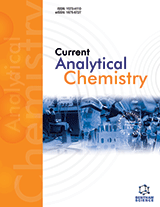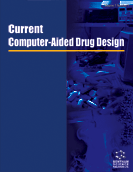摘要
本文中,我们强调了文献报道结果,旨在阐明P2X受体的正位拮抗剂和激动剂的结构和生物活性。事实上,只有少数P2X受体激动剂已被发现,其中大部分是通过修饰天然配体ATP而得到的,他们是P2X受体没有选择性的亚型。特别是, BzATP (9)是最有效的P2X受体激动剂之一,其某些亚型的EC 50值在纳摩尔范围内。不同于激动剂, P2X受体拮抗剂属于不同的化学类别,如高分子量的聚磺酸芳分子如苏拉明及其简化衍生物和蒽醌化合物。所有这些分子被证明在P2X受体上是无选择性的,由于几个带电基团的存在它们被赋予了微摩尔活性和不利的药物动力学性质。此外修饰天然配体的ATP变形导致P2X受体拮抗剂如TNP -ATP的发现(29) ,这虽然不是选择性的,仍在P2X1 , P2X3 (IC 50分别为0.006 μM和0.001 μM)和异P2X2 / 3受体中表现出较高的效价。此外,二核苷酸肌苷磷酸盐Ip5I(33)被发现是一种有效的和选择性的P2X1和 P2X3受体的拮抗剂,其IC 50 = 0.003 μM 。过去几年,制药公司在利益的驱动下,通过使用高通量筛选,获得了有效的和赋有新颖的结构的选择性拮抗剂,其中几个目前处于一些治疗应用的临床试验阶段。
关键词: P2X1 , P2X2 , P2X3 , P2X4 , P2X5 , P2X6 , P2X7 , P2X受体激动剂, P2X受体拮抗剂。
Current Medicinal Chemistry
Title:Medicinal Chemistry of P2X Receptors: Agonists and Orthosteric Antagonists
Volume: 22 Issue: 7
Author(s): Catia Lambertucci, Diego Dal Ben, Michela Buccioni, Gabriella Marucci, Ajiroghene Thomas and Rosaria Volpini
Affiliation:
关键词: P2X1 , P2X2 , P2X3 , P2X4 , P2X5 , P2X6 , P2X7 , P2X受体激动剂, P2X受体拮抗剂。
摘要: In this work, we have highlighted data reported in the literature trying to draw a complete picture of the structures and biological activity of agonists and orthosteric antagonists of P2X receptors. Actually, only few P2X receptor agonists have been found and most of them are derived from modification of the natural ligand ATP and they are P2X receptor subtype unselective. In particular, BzATP (9) is one of the most potent P2X receptor agonists with EC50 value in the nanomolar range at some subtypes. Differently from agonists, P2X receptor antagonists belong to different chemical classes such as high molecular weight aryl polysulfonate molecules like suramin and its simplified derivatives and anthraquinone compounds. All these molecules proved to be non selective at P2X receptors, and they are endowed with micromolar activity and not favourable pharmacokinetic properties due to the presence of several charged groups. Also modification of the natural ligand ATP led to the discovery of P2X receptor antagonists like TNP-ATP (29), which, although not selective, showed high potency at P2X1, P2X3 (IC50 of 0.006 µM and 0.001 µM, respectively), and heteromeric P2X2/3 receptors. Also the dinucleotide inosine polyphosphate Ip5I (33) was found to be a potent and selective antagonist at P2X1 vs P2X3 receptors with IC50 = 0.003 µM. A significant improvement has been gained from the interest of pharmaceutical companies that in the last years discovered, through the use of high-throughput screening, potent and selective antagonists endowed with novel structures, some of which are currently in clinical trials for several therapeutic applications.
Export Options
About this article
Cite this article as:
Catia Lambertucci, Diego Dal Ben, Michela Buccioni, Gabriella Marucci, Ajiroghene Thomas and Rosaria Volpini , Medicinal Chemistry of P2X Receptors: Agonists and Orthosteric Antagonists, Current Medicinal Chemistry 2015; 22 (7) . https://dx.doi.org/10.2174/0929867321666141215093513
| DOI https://dx.doi.org/10.2174/0929867321666141215093513 |
Print ISSN 0929-8673 |
| Publisher Name Bentham Science Publisher |
Online ISSN 1875-533X |
 113
113 12
12 1
1 1
1
- Author Guidelines
- Bentham Author Support Services (BASS)
- Graphical Abstracts
- Fabricating and Stating False Information
- Research Misconduct
- Post Publication Discussions and Corrections
- Publishing Ethics and Rectitude
- Increase Visibility of Your Article
- Archiving Policies
- Peer Review Workflow
- Order Your Article Before Print
- Promote Your Article
- Manuscript Transfer Facility
- Editorial Policies
- Allegations from Whistleblowers
- Announcements
Related Articles
-
Structure, Function, and Pathogenesis of SHP2 in Developmental Disorders and Tumorigenesis
Current Cancer Drug Targets Ethnicity and Drug Therapy for Hypertension
Current Pharmaceutical Design Adrenomedullin-RAMP2 System in Cardiovascular Development and Homeostasis
Current Hypertension Reviews Racing of the Biological Pacemaker
Recent Patents on DNA & Gene Sequences Pathway-Specific, Species, and Sub-Type Counterscreening for Better GPCR Hits in High Throughput Screening
Current Pharmaceutical Biotechnology Cilostazol as a Unique Antithrombotic Agent
Current Pharmaceutical Design Urea Derivatives as Anticancer Agents
Anti-Cancer Agents in Medicinal Chemistry Altered Calcium Handling in Reperfusion Injury
Medicinal Chemistry Angiogenesis-regulating microRNAs and Ischemic Stroke
Current Vascular Pharmacology What Makes Y Family Pols Potential Candidates for Molecular Targeted Therapies and Novel Biotechnological Applications
Current Molecular Medicine Lung Cancer: Are we up to the Challenge?
Current Genomics Repositioning of Drugs in Cardiometabolic Disorders: Importance and Current Scenario
Current Topics in Medicinal Chemistry Use of Medication in Coronary Imaging by CT
Current Medical Imaging Editorial (Thematic Issue: Drug Delivery Design for Regenerative Medicine)
Current Pharmaceutical Design Magnesium as a Neuroprotective Agent in Cerebral Ischemia
Current Medicinal Chemistry - Central Nervous System Agents Biomarkers of Senescence during Aging as Possible Warnings to Use Preventive Measures
Current Medicinal Chemistry Nutrition, Nitrogen Requirements, Exercise and Chemotherapy-Induced Toxicity in Cancer Patients. A puzzle of Contrasting Truths?
Anti-Cancer Agents in Medicinal Chemistry Inhibitors of Leucine-Rich Repeat Kinase 2 (LRRK2): Progress and Promise for the Treatment of Parkinson’s Disease
Current Topics in Medicinal Chemistry Role of Asymmetric Dimethylarginine in Cardiorenal Syndrome
Current Pharmaceutical Design Vitamin D Supplementation: A Promising Approach for the Prevention and Treatment of Strokes
Current Drug Targets


























